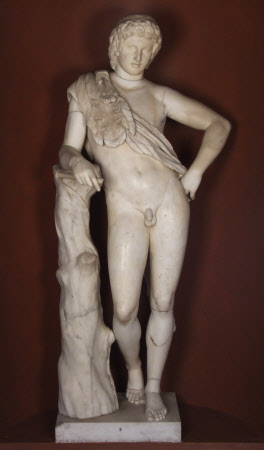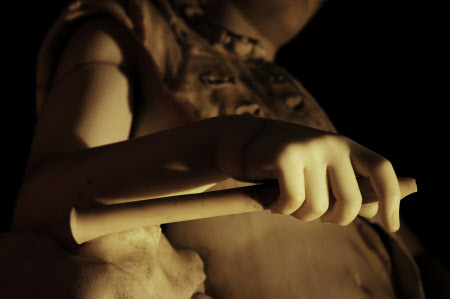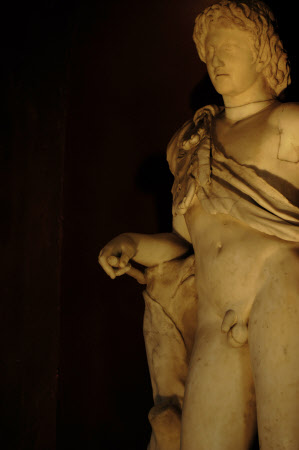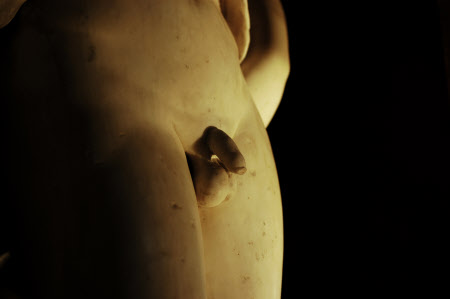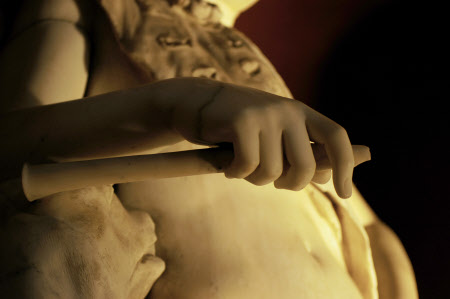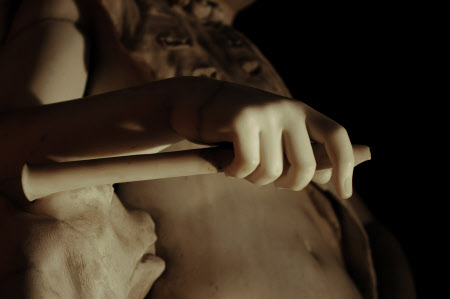A Satyr in Repose
after Praxiteles
Category
Art / Sculpture
Date
Unknown
Materials
White marble torso with visible grain and yellow fine-grained Parian marble head
Measurements
280 mm (Height)
Order this imageCollection
Petworth House and Park, West Sussex
NT 486314
Summary
White marble with visible grain and the head in yellow, fine-grained Parian marble, A Satyr in Repose, after Praxiteles (5th century BC). Of Praxitelean origin, the youthful full-length marble satyr stands clad in an animal skin lounging with the right elbow resting on a tree stump and the left hand on the hip. A satyr in early mythology was a half-bestial spirit of woods and hills, mischievous and amorous, they appear chasing nymphs or revelling with Dionysus at drinking-parties, on vases from the sixth century onwards, often with horses' tails. Praxitiles was known to have made several statues of satyrs, known now from copies, of which a satyr pouring wine is famous; these are nearer to the rustic satyrs of Hellenistic Arcadia., Praxiteles was an Athenian sculptor of the mid-fourth century BC, much admired and imitated throughout antiquity. Many of his marble statues are known through copies; for example, the Aphrodite of Cnidos, described by Lucian and the elder Pliny, the Aphrodite of Arles and Apollo the Lizard-slayer.
Provenance
Collected by Charles, 2nd Earl of Egremont thence by descent, until the death in 1952 of the 3rd Lord Leconfield, who had given Petworth to the National Trust in 1947, and whose nephew and heir, John Wyndham, 6th Lord Leconfield and 1st Lord Egremont (1920-72), arranged for the acceptance of the major portion of the collections at Petworth in lieu of death duties (the first ever such arrangement) in 1956 by H.M. Treasury.
Marks and inscriptions
8 (painted on front of base)
Makers and roles
after Praxiteles, sculptor
References
Wyndham 1915 Margaret Wyndham, Catalogue of the Collection of Greek and Roman Antiquities in the Possession of Lord Leconfield, The Medici Society, 1915, p. 13-14
